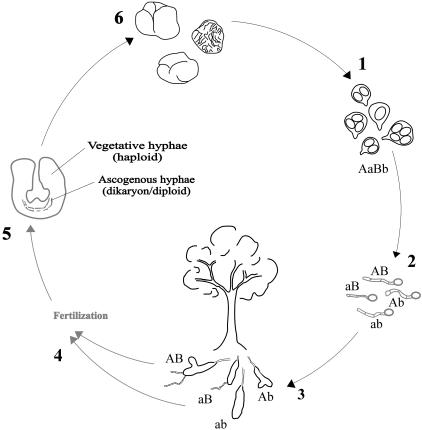FIG. 1.
Revised life cycle of Tuber magnatum. (1) Asci are released following ripening of the ascocarp. (2) In close proximity to host plant root tips, ascospores germinate to produce primary homokaryotic (haploid) mycelia. (3) The primary mycelia colonize the apical root tips and form ectomycorrhizae. The mycorrhizae colonizing roots can arise from different primary mycelia, so different fungal genotypes may colonize a common host root. From the mycorrhizae, extramatrical primary mycelia develop and spread into the soil. (4) Details of the fertilization process are unknown, but by analogy to other Ascomycetes organisms, a spermatization process seems likely. The function of a male gamete may be filled by any detached cell, e.g., a hyphal fragment, conidium, or ascospore. (5) Ascocarp primordia develop. The ascogenous heterokaryotic hyphae resulting from the fertilization process are surrounded by homokaryotic maternal vegetative hyphae. (6) Adult ascocarps are composed of asci and sterile hyphae. Stages not directly observed in this study are indicated in light gray.

